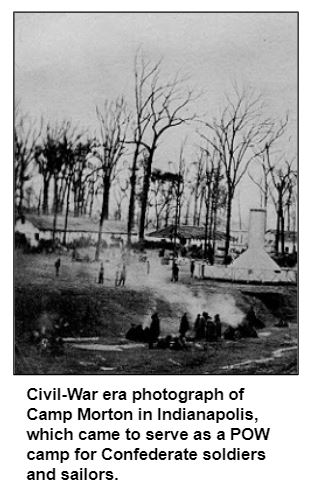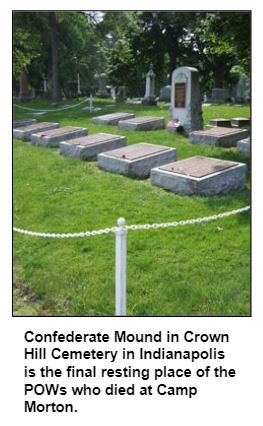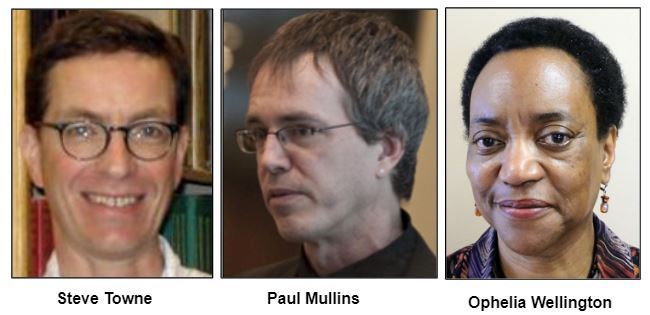Jul 2, 2020
Following the recent dismantling in an Indianapolis park of a Confederate monument that originally marked the graves of prisoners of war who died at a Union Army camp, Hoosier History Live will explore the historic context of various aspects of the controversy.

Civil War historian Steve Towne, the author of Surveillance and Spies in the Civil War (Ohio University Press) and other books and award-winning articles about the Civil War, is an archivist at IUPUI. His colleague Paul Mullins, an anthropology professor, has researched the Confederate monument, which he notes was placed initially at Greenlawn Cemetery in 1909.
Greenlawn, the first major public cemetery in Indianapolis, was located near the White River and Kentucky Avenue, a site that was prone to flooding and later became increasingly industrialized. The monument, funded by the federal government, was a mass marker for 1,616 Confederate POWs whose remains could not be identified individually. Their remains were moved to Crown Hill Cemetery, Greenlawn's successor as the city's major graveyard; the reburial site at Crown Hill is known as Confederate Mound. According to Paul Mullins, the POWs' remains were reburied at Confederate Mound in 1931.
Along with Steve Towne and Paul Mullins, our guests during the show will include Ophelia Wellington, founder of Freetown Village, a living history museum she created in 1982 to teach African-American history.

During the course of the war, Camp Morton primarily served as a POW camp for Confederate soldiers and sailors; by the end of the war, about 1,700 had died there. Today, much of the Herron-Morton Place Neighborhood is on the site of Camp Morton.
With the moves of the POWs' remains, many could not be identified. The relocation of the federally-funded monument (with a metal plate at the base that lists the names of the POWs) from Greenlawn to Garfield Park was advocated by the Southern Club of Indianapolis, which Paul Mullins will describe during our show.
The placement of the monument in a public park in the late 1920s has been controversial for several years. Since the June 8 dismantling, it has been stored at an undisclosed location.
It is not the only Confederate monument, memorial or marker in Indiana. According to the Indiana Historical Bureau, a state historic marker in the Franklin County town of Laurel, birthplace of a Confederate brigadier general, is under review for "misleading and inaccurate statements" as well as the lack of proper historic context on the signage. In Terre Haute, an obelisk at Woodlawn Cemetery memorializes eleven Confederates who died in a POW camp in the city.
The phone lines will be opened earlier than usual during our show for listeners' questions and comments.
